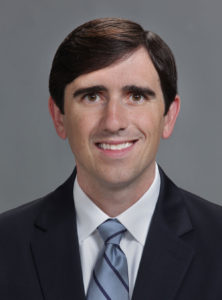PCL Reconstruction Surgeon

Are you an athlete who participates in contact sports? If so, you may be at risk of sustaining a PCL injury. PCL injuries are not as common as ACL injuries, but when they occur, patients can experience severe knee instability and loss of proper funciton. PCL surgeon, Dr. Robert Boykin provides diagnosis and both surgical and nonsurgical treatment options for patients in Asheville who have torn their PCL. Contact Dr. Boykin’s team today!
Anatomy of the Knee
There are four major ligaments (restraints) that make up the knee joint. These include: the anterior cruciate ligament (ACL), posterior cruciate ligament (PCL), medial collateral ligament (MCL), and posterior lateral corner (PLC). The PCL is a ligament that is inside the knee joint near the back of the knee. It is responsible for keeping the bone in the leg from moving backwards (or posterior) in relation to the bone in the thigh. PCL knee injuries are not as common as ACL knee injuries; however, they can cause significant instability of the knee and disability for patients.
What is a PCL Tear
The ligament may be torn in isolation or in conjunction with other ligaments of the knee. Mild injuries to the PCL can oftentimes heal on their own after injury with proper bracing and rehabilitation. However, in certain instances the ligament is torn to the extent that a PCL reconstruction may be necessary. Dr. Boykin specializes in the treatment of PCL tears for patients in Asheville, Arden, Fletcher and surrounding communities.
When to Have PCL Surgery
Dr. Boykin usually recommends surgical reconstruction of the PCL only for complete (grade III) PCL tears. A PCL reconstruction involves removing the damaged ligament and reconstructing a new ligament with a graft. For the PCL, the graft is usually donated tissue (known as an allograft) that is the same size and shape as the original PCL ligament. The new ligament formed by the graft is held in place with a combination of specialized screws and staples. Dr. Boykin performs the procedure arthroscopically using a camera, small incisions, and specialized instruments.
Recovery Following PCL Reconstruction
Physical therapy is a very important part of the recovery process after a PCL reconstruction. A detailed program begins immediately after surgery and progresses to range of motion and eventually strengthening of the knee. Following surgery, a brace is required for six months to prevent gravity from stretching out the reconstructed ligament. Initially, patients cannot place weight on their leg and must use crutches for 6 weeks. Strengthening begins after the patient is off crutches, and running and pivoting sports are initiated around 6-9 months depending on the progression with therapy.
For additional information on ligament injuries of the knee, or to learn more about PCL reconstruction surgery, please contact the office of sports medicine specialist and orthopedic knee surgeon, Dr. Robert Boykin who treats patients in the Asheville, Arden, Fletcher and surrounding North Carolina communities.
